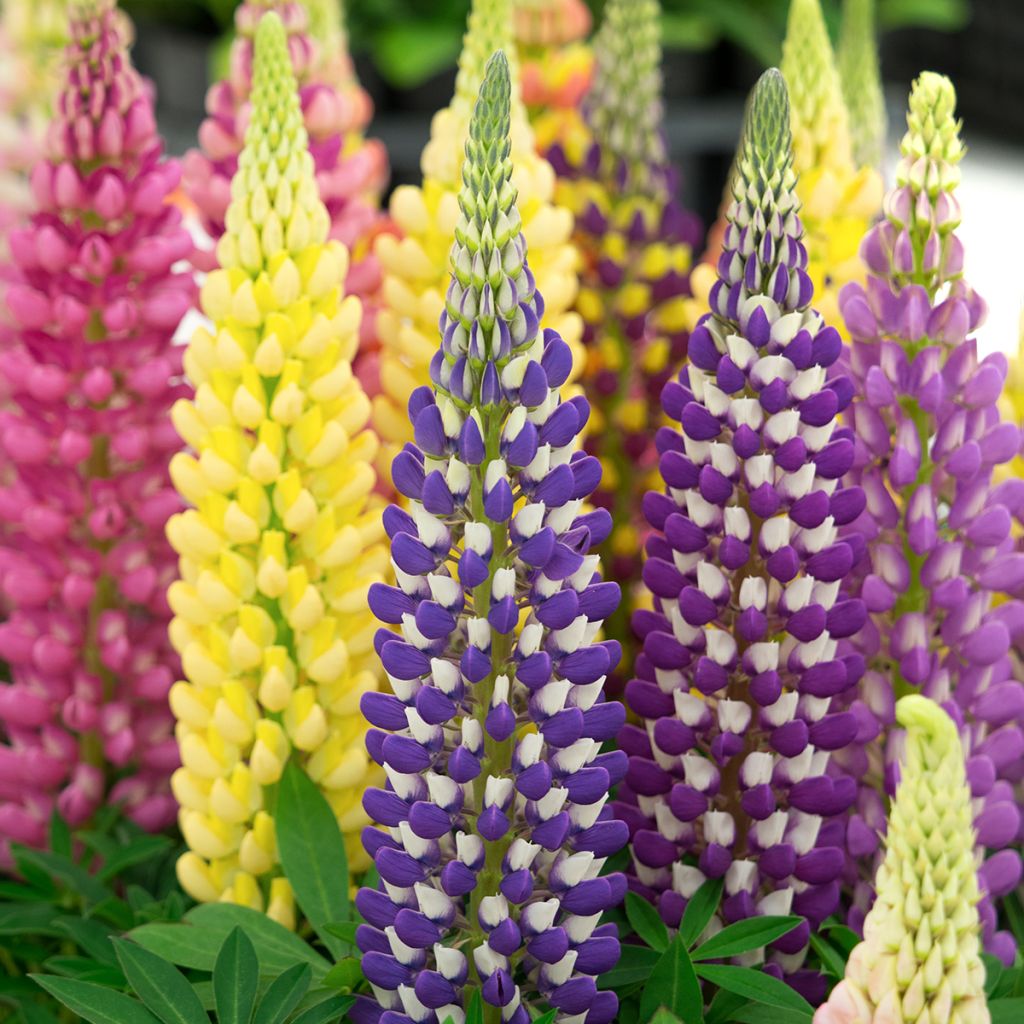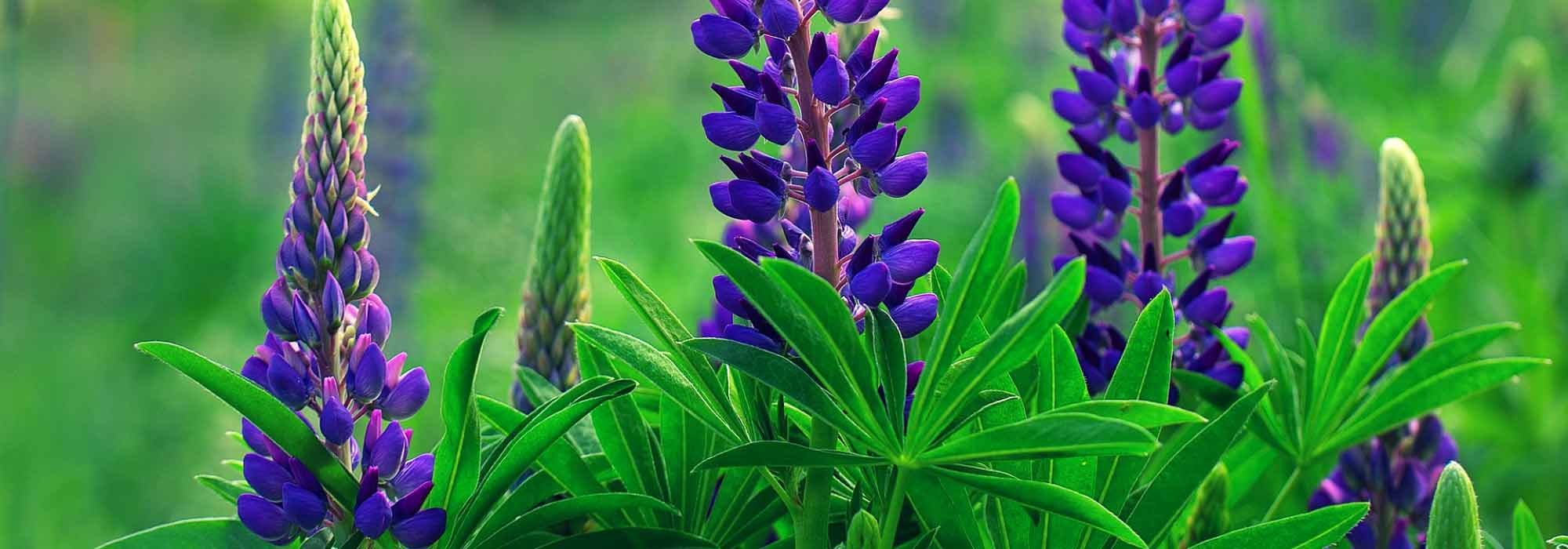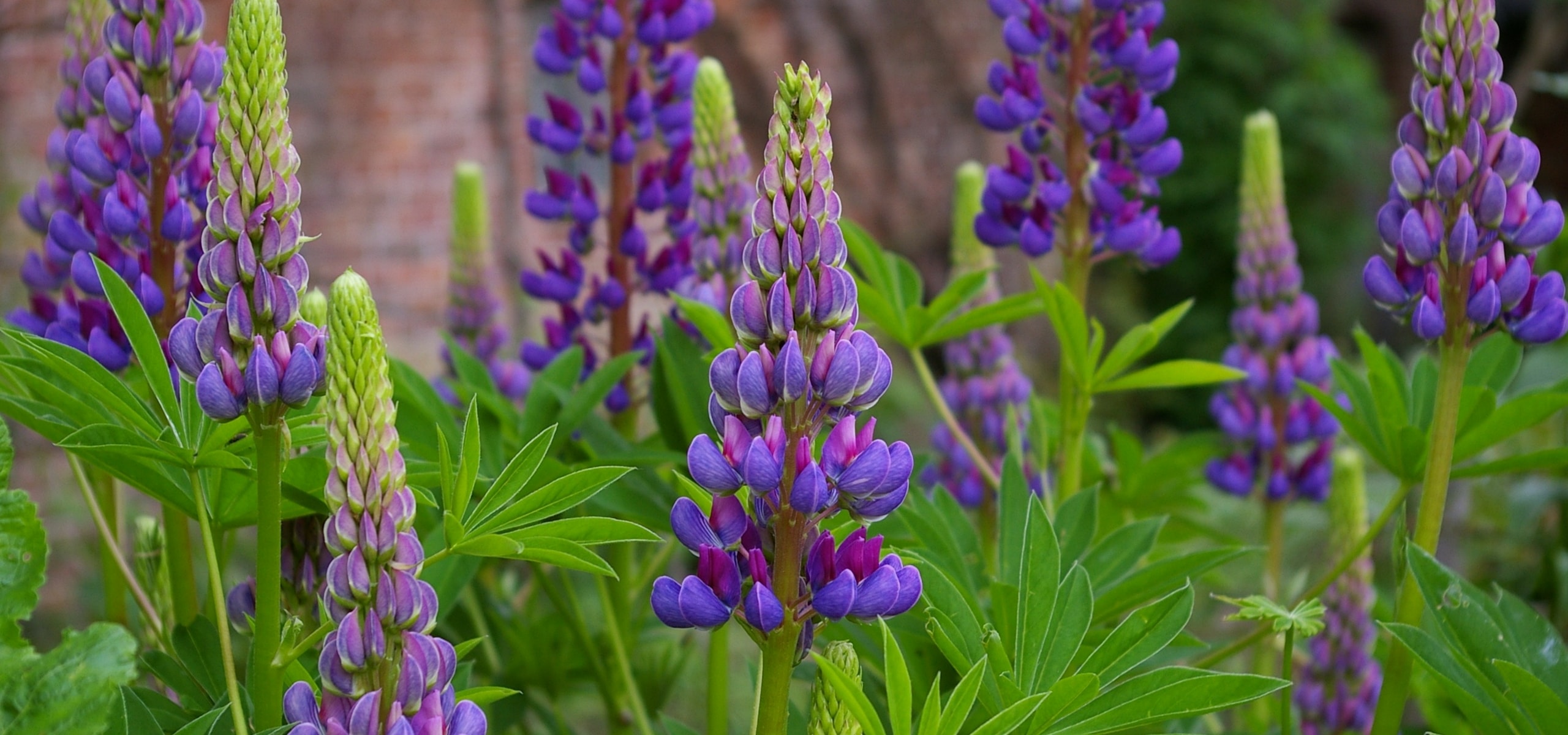

Lupinus Mini Gallery Extra Mixture - untreated Large-leaved Lupine seeds
Lupinus Mini Gallery Extra Mixture - untreated Large-leaved Lupine seeds
Lupinus MINI GALLERY® Extra Mixture untreated
Large-leaved Lupine, Big-leaved Lupine, Garden Lupin, Russell Lupin
Special offer!
Receive a €20 voucher for any order over €90 (excluding delivery costs, credit notes, and plastic-free options)!
1- Add your favorite plants to your cart.
2- Once you have reached €90, confirm your order (you can even choose the delivery date!).
3- As soon as your order is shipped, you will receive an email containing your voucher code, valid for 3 months (90 days).
Your voucher is unique and can only be used once, for any order with a minimum value of €20, excluding delivery costs.
Can be combined with other current offers, non-divisible and non-refundable.
Home or relay delivery (depending on size and destination)
Schedule delivery date,
and select date in basket
This plant carries a 6 months recovery warranty
More information
We guarantee the quality of our plants for a full growing cycle, and will replace at our expense any plant that fails to recover under normal climatic and planting conditions.
Does this plant fit my garden?
Set up your Plantfit profile →
Description
This unprocessed seed mix of Dwarf Perennial Lupin takes inspiration from the Mini Gallery range of attractive varieties with various and often vibrant colours, like raspberry red. These highly floriferous Lupins are also earlier blooming and offer a long flowering season. Their compactness is a real advantage in the garden, where they will fit well even in small beds. Growing in full sun and tolerating partial shade, they are easy to cultivate in non-chalky soil.
Lupin is a member of the Fabaceae family (formerly Leguminosae), ranked third in terms of species in the plant kingdom. It is also the second most important family for human consumption, just after cereals (Grasses). The Fabaceae family also includes numerous ornamental, herbaceous and woody species, as well as climbing plants (such as Wisteria).
The Lupinus genus alone comprises over 600 species, including Lupinus polyphyllus, or Garden Lupin, native to North America. This species has given rise to numerous horticultural varieties through hybridisation with others, notably the popular Russell Lupin group, recognisable by their tall stature and long flower clusters.
The MINI GALLERY® series is the result of hybridisations of the Garden Lupin, bringing significant advantages. The overall appearance of the plant remains the same, with palmate compound leaves of a slightly glaucous dark green that are particularly decorative. The habit is bushy, as the plant readily branches out and forms a more compact clump, reaching approximately 40 cm in height and width. It has deep roots with nodules characteristic of the Fabaceae family, which house bacteria that enable the plant to fix atmospheric nitrogen (a capacity exploited in agriculture through the sowing of green manure, leguminous plants that provide nitrogen without the use of fertilisers).
The varieties in this mix are especially appreciated for their floriferousness and early blooming, flowering from May to August, provided faded flowers are removed. The 25 to 30 cm tall flower clusters span a wide range of colours, from white to raspberry red, as well as yellow, blue, mauve, or pink. However, this perennial Lupin should be renewed every 3 to 4 years to prevent degeneration.
This compact Lupin mix fascinates with the abundance of its flowers and the multicoloured volume it creates for a large part of the growing season. These lupins are easy to cultivate in non-chalky soil and can be planted along borders, in flower beds, or on moderately dry slopes. Pair them with the Peach-leaved Bellflower (Campanula persicifolia), another easy-to-grow perennial that offers a superb summer flowering in a delicate blue, equally beautiful in the ground or as a cut flower. To create a stunning contrast of shapes and colours by playing with foliage, insert a few clumps of Festuca glauca Elijah Blue in your scene, a compact and truly blue fescue grass. This small grass forms very dense clumps of 30 cm in all directions, composed of remarkably fine steel blue foliage with striking patterns.
Flowering
Foliage
Plant habit
Safety measures
Botanical data
Lupinus
MINI GALLERY® Extra Mixture untreated
Fabaceae
Large-leaved Lupine, Big-leaved Lupine, Garden Lupin, Russell Lupin
Cultivar or hybrid
ingestion
Cette plante est toxique si elle est ingérée volontairement ou involontairement.
Ne la plantez pas là où de jeunes enfants peuvent évoluer, et lavez-vous les mains après l'avoir manipulée.
Pensez à conserver l'étiquette de la plante, à la photographier ou à noter son nom, afin de faciliter le travail des professionnels de santé.
Davantage d'informations sur https://plantes-risque.info
Planting and care
Sow your seeds from late January to April after soaking overnight in cold water, then sow them under 0.3 cm of good seed compost at a temperature of at least 15 to 18 °C. Germination usually takes 15 to 20 days. The substrate should remain moist without excess. Once your seedlings are strong enough to handle, transplant them into well-prepared soil, making sure to space them at least 30 cm apart. You can also sow directly in place in late spring when the soil is well warmed up, in well-prepared soil, with a spacing of 25-30 cm.
Sowing period
Intended location
Planting & care advice
This item has not been reviewed yet - be the first to leave a review about it.
Haven't found what you were looking for?
Hardiness is the lowest winter temperature a plant can endure without suffering serious damage or even dying. However, hardiness is affected by location (a sheltered area, such as a patio), protection (winter cover) and soil type (hardiness is improved by well-drained soil).

Photo Sharing Terms & Conditions
In order to encourage gardeners to interact and share their experiences, Promesse de fleurs offers various media enabling content to be uploaded onto its Site - in particular via the ‘Photo sharing’ module.
The User agrees to refrain from:
- Posting any content that is illegal, prejudicial, insulting, racist, inciteful to hatred, revisionist, contrary to public decency, that infringes on privacy or on the privacy rights of third parties, in particular the publicity rights of persons and goods, intellectual property rights, or the right to privacy.
- Submitting content on behalf of a third party;
- Impersonate the identity of a third party and/or publish any personal information about a third party;
In general, the User undertakes to refrain from any unethical behaviour.
All Content (in particular text, comments, files, images, photos, videos, creative works, etc.), which may be subject to property or intellectual property rights, image or other private rights, shall remain the property of the User, subject to the limited rights granted by the terms of the licence granted by Promesse de fleurs as stated below. Users are at liberty to publish or not to publish such Content on the Site, notably via the ‘Photo Sharing’ facility, and accept that this Content shall be made public and freely accessible, notably on the Internet.
Users further acknowledge, undertake to have ,and guarantee that they hold all necessary rights and permissions to publish such material on the Site, in particular with regard to the legislation in force pertaining to any privacy, property, intellectual property, image, or contractual rights, or rights of any other nature. By publishing such Content on the Site, Users acknowledge accepting full liability as publishers of the Content within the meaning of the law, and grant Promesse de fleurs, free of charge, an inclusive, worldwide licence for the said Content for the entire duration of its publication, including all reproduction, representation, up/downloading, displaying, performing, transmission, and storage rights.
Users also grant permission for their name to be linked to the Content and accept that this link may not always be made available.
By engaging in posting material, Users consent to their Content becoming automatically accessible on the Internet, in particular on other sites and/or blogs and/or web pages of the Promesse de fleurs site, including in particular social pages and the Promesse de fleurs catalogue.
Users may secure the removal of entrusted content free of charge by issuing a simple request via our contact form.
The flowering period indicated on our website applies to countries and regions located in USDA zone 8 (France, the United Kingdom, Ireland, the Netherlands, etc.)
It will vary according to where you live:
- In zones 9 to 10 (Italy, Spain, Greece, etc.), flowering will occur about 2 to 4 weeks earlier.
- In zones 6 to 7 (Germany, Poland, Slovenia, and lower mountainous regions), flowering will be delayed by 2 to 3 weeks.
- In zone 5 (Central Europe, Scandinavia), blooming will be delayed by 3 to 5 weeks.
In temperate climates, pruning of spring-flowering shrubs (forsythia, spireas, etc.) should be done just after flowering.
Pruning of summer-flowering shrubs (Indian Lilac, Perovskia, etc.) can be done in winter or spring.
In cold regions as well as with frost-sensitive plants, avoid pruning too early when severe frosts may still occur.
The planting period indicated on our website applies to countries and regions located in USDA zone 8 (France, United Kingdom, Ireland, Netherlands).
It will vary according to where you live:
- In Mediterranean zones (Marseille, Madrid, Milan, etc.), autumn and winter are the best planting periods.
- In continental zones (Strasbourg, Munich, Vienna, etc.), delay planting by 2 to 3 weeks in spring and bring it forward by 2 to 4 weeks in autumn.
- In mountainous regions (the Alps, Pyrenees, Carpathians, etc.), it is best to plant in late spring (May-June) or late summer (August-September).
The harvesting period indicated on our website applies to countries and regions in USDA zone 8 (France, England, Ireland, the Netherlands).
In colder areas (Scandinavia, Poland, Austria...) fruit and vegetable harvests are likely to be delayed by 3-4 weeks.
In warmer areas (Italy, Spain, Greece, etc.), harvesting will probably take place earlier, depending on weather conditions.
The sowing periods indicated on our website apply to countries and regions within USDA Zone 8 (France, UK, Ireland, Netherlands).
In colder areas (Scandinavia, Poland, Austria...), delay any outdoor sowing by 3-4 weeks, or sow under glass.
In warmer climes (Italy, Spain, Greece, etc.), bring outdoor sowing forward by a few weeks.






































